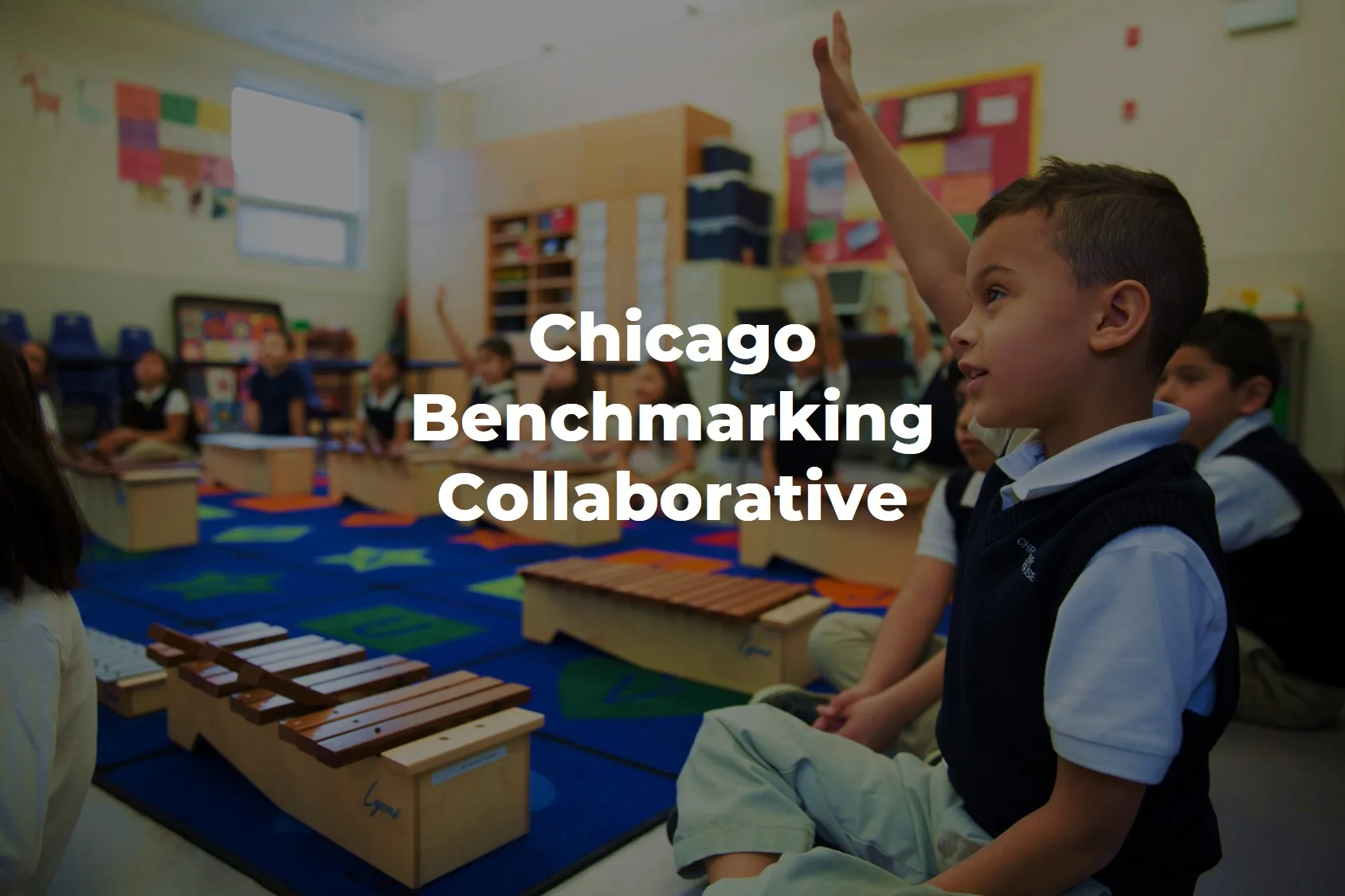Big Shoulders Fund
How Salesforce Experience Cloud and Virtual Administrator Services Transformed Operations and Enhanced Collaboration at Big Shoulders Fund
Big Shoulders Fund, a Chicago-based nonprofit organization founded in 1986, is dedicated to providing quality educational opportunities to underserved students. Collaborating with a network of 72 schools in Chicago and 20 in Northwest Indiana, Big Shoulders Fund offers high-quality, values-based education to approximately 25,000 children, with 70% residing in low-income households.
Big Shoulders Fund also served as a registered scholarship granting organization (SGO) in the Illinois Invest in Kids Tax Credit Scholarship Program from its initiation in 2018 through the legislative sunset of the program in December 2023. As an SGO, it both administered qualified contributions from individuals and businesses and disbursed funds in the form of scholarships to students from families with demonstrated financial need. Over the life of the program, Big Shoulders Fund awarded more than $100 million in scholarships.
In a strategic partnership with Exponent Partners, Big Shoulders Fund embarked on a transformative journey by implementing a community portal built on Salesforce Experience Cloud. This initiative aimed to revolutionize their approach to data management, streamline operations, improve communication, and empower schools through an intuitive user interface. Beyond operational enhancements, this engagement has been a catalyst in achieving their broader mission. It stands as a testament to the organization’s unwavering commitment to advancing educational opportunities for children in need. Join us in exploring the impactful collaboration between Big Shoulders Fund and Exponent Partners.
Christine Sweeney, Managing Director of Operations and Administrative Systems at Big Shoulders Fund, reflects on the significance of this collaboration: “Thinking about the size of the team and the scale and nuance of our operations, it’s hard to imagine how we would have done this without the Experience site and the support of a knowledgeable team that knows our organization well. We were able to make big decisions quickly because the team at Exponent Partners has an incredible depth of Salesforce expertise, understanding of nonprofit contexts, and familiarity with Big Shoulders Fund’s programs and the progression of our Salesforce adoption.”
Situation
Manual and Inefficient Processes
As it grew over the years, Big Shoulders Fund took on more and more scholarship administration responsibilities and came to manage over 70 distinct individual scholarship programs for more than 3,000 students. While the organization made significant early strides with data management after moving to Salesforce and FormAssembly from an entirely paper-based approach, it still faced issues with process efficiency in the intricate exchange of student data with the hundreds of contacts within its network and partner schools.
With the introduction of the Tax Credit Scholarship Program in 2018, its operations became even more complex. In 2023, Big Shoulders Fund supported a total of 6,641 scholars across its Tax Credit Scholarship and traditional scholarship programs, with an impressive 14,331 applications submitted for Tax Credit Scholarships alone, highlighting the scale and complexity of their operations.
Manual generation of reports and reliance on email communication were the primary tools of collaboration driving scholarship operations. Several labor-intensive processes involved creating reports, merging them into documents, and emailing them to 72 different schools. Schools, in turn, communicated changes via emails, scanned reports, or phone calls, contributing to a time-consuming and often manual cycle. The challenges were amplified when factoring in Big Shoulders Fund’s Tax Credit Scholarship Program which engages an additional 114 non-network partner schools, for a total of 182 schools involved in this back-and-forth data exchange.
Data Visibility and Real-time Access
Before the implementation of the community portal, schools lacked real-time access to data. Communication relied on emails and phone calls, resulting in task redundancy, duplication of effort, and significant allocation of staff time to ensure the accuracy of or to manually correct data. This all posed a significant challenge to operational efficiency and partner service experience.
As aptly described by Kamilah Anderson, Accounting Project Coordinator at Big Shoulders Fund, schools had to resort to means, such as “emailing the person I know or sending a communication or request through a general inbox and hoping that someone internally would steward that request appropriately.” This approach fell short of Big Shoulders Fund’s goal of alleviating the administrative burden on schools, particularly those with lean front office staffing or other resource constraints.
Form Complexity
Big Shoulders Fund encountered substantial complexities with FormAssembly, utilizing 40 different forms for various processes. This created time-consuming tasks for schools, causing data entry challenges and subsequent cleanup for the organization. The backend work to control duplicates was substantial, adding days to data validation and closeout of processes after scholarship application or a requested data submission deadline. As described by Christine Sweeney, the Managing Director of Operations and Administrative Systems at Big Shoulders Fund, “in scenarios like Tax Credit or Common Application submissions, the awarding and selection process couldn’t commence until the system admin completed a six-step process in Apsona to capture and merge duplicate records. This translated to an additional 2 to 4 days on the backend of closing a form. The process also involved extensive monitoring of error logs, reconciling between systems, and, in some cases, resolving errors mid-stream by turning off a connector. This intricate workflow not only created delays when issues emerged; it often had an impact on daily operations and limited my capacity for Salesforce system maintenance tasks or troubleshooting issues for our internal users.”
The interplay between FormAssembly’s intricacies and the organization’s data model also led to a gap in understanding among staff beyond the organization’s sole Salesforce system admin, leading to challenges in providing real-time assistance to schools and operational risk for the organization. The overall complexity of the system led to inefficiencies and troubleshooting difficulties.
Solution
In collaboration with Exponent Partners, Big Shoulders Fund implemented a tailored community portal on Salesforce Experience Cloud. This portal facilitated seamless communication with partner schools, providing them real-time access to critical data. The community portal allowed partners to submit over 3,200 scholarship applications on behalf of their students and directly update student data regarding elementary and high scholar matriculation and enrollment verification, consent to release educational records, grade assessments, and various other award eligibility requirements such as student essays. It also granted school employees different levels of access to scholarship data, application statuses, waitlist, and awardee details.
As a crucial step in the transformation, student and school records underwent significant restructuring to align with Salesforce’s best practices. This reorganization streamlined administrator categories and simplified the overall data structure. The result was not only improved data management efficiency but also the groundwork for better reporting, financial transparency, and enhanced collaboration between teams. This shift to a standard data model also made it easier for Exponent Partners to support Big Shoulders Fund effectively.
Exponent Partners’ Virtual Admin (VA) services took the system’s optimization to the next level. Once the significant technical debt had been cleared, the Virtual Admin was able to add new features to further Big Shoulders Fund’s vision for real time data collaboration with partners, such as embedding its annual Common Application forms in the Experience site, consolidating existing and developing new data administration processes to improve validity, and serving as a strategic thought partner for leveraging reports, dashboards, and out-of-the-box Salesforce functionality. By utilizing Salesforce flows, various tasks were automated, significantly boosting the speed and precision of operations.
Results and Impact
The impact of the portal and associated enhancements was transformative for Big Shoulders Fund. The organization experienced a significant reduction in manual processes, resulting in increased operational efficiency. Some of these results include:
Efficiency Gains and Process Transformation
The community portal brought about transformative changes, reducing manual efforts significantly. The portal’s impact on document management for the tax credit program alone saved approximately 3,500 hours annually. It improved credibility with schools, instilled confidence, and standardized training for external users.
Case Utilization and Enhanced Relationship Management
The implementation of Cases in Salesforce has proven instrumental for Big Shoulders Fund, with 3,429 cases efficiently managed within a year through the portal. This streamlined process assists schools in handling various matters like verifying bank information, processing payments, resolving technical issues, managing changes, overseeing enrollment, and coordinating with other grantmakers.
As Big Shoulders Fund moves into its second school year of supporting school users via the portal, Cases have continued to be a key way for these partners to collaborate. Case utilization has increased 16% this year, underscoring the portal’s value for schools, enhancing efficiency, and expediting processes. The system’s ability to audit and track all communications ensures transparent and effective workflows.
Streamlined Communication and Improved Experiences
The community portal facilitates seamless communication between Big Shoulders Fund and its partner schools. Real-time access to data has reduced the need for manual requests, empowering schools with self-service functionalities. “Over and over again, I hear from school portal users that this site has been a game-changer with regard to the ability to have real-time access to data,” noted Lauren Anderson, Director of Scholarship Programs at Big Shoulders Fund. She also shared that “because there’s data visibility for schools, it keeps us accountable. We now have the tools to be more diligent data managers and have a better sense of how to guide schools in using the Experience site because it requires high-level familiarity with our data.”
Improved Data Accuracy
The project resolved key challenges with Big Shoulders Fund’s overall data structure and integrity through a comprehensive data transformation. In this transformative process, Exponent Partners was able to work with Big Shoulders Fund to transition their data model to a more standard use of Salesforce Account and Contact objects. School records, which had previously been stored as custom object records, were migrated to Account records, following best practices for Salesforce design and relieving technical debt. The number of Contact record types was reduced from 7 to 2, significantly reducing administrative burden. By addressing intricacies within the data model and restructuring record types, the organization not only rectified existing data silos and inaccuracies but also laid the foundation for future operational enhancements. “It gave us an opportunity to assess and understand our own complexity,” noted Christine Sweeney, Managing Director, Operations and Administrative Systems at Big Shoulders Fund. “The direct impact on our instance was very transformational. It has also improved our credibility in the eyes of schools and allowed us to better engage in relationship management with them.”
Enhanced Financial Transparency
The new system has demystified the awarding and contribution management processes, particularly for the Tax Credit Scholarship program. Previous to the implementation of the portal, the organization would often hear, “this would be so much easier if you had a portal where I could see all of my applicants, where they are in the selection process, and all of the contributions that program donors have designated for my school.” Schools appreciate the increased transparency made possible by the Experience site. They had 24/7 access to application records that surfaced directly from Big Shoulders Fund’s Salesforce system and could assess waitlists, decline or accept awards in real-time through bulk management processes. In addition, Big Shoulders Fund could present contribution information to schools’ fund development and advancement teams in a timely manner, thus better positioning them to acknowledge and steward relationships with individuals who supported their school through this scholarship program. Both examples demonstrate the impact of the Experience site in strengthening the schools’ operations.
Increased User Adoption
One of the key outcomes of implementing the Experience site has been a substantial increase in user adoption and a significant improvement in troubleshooting efficiency. The pivotal feature of allowing staff to log in from the perspective of a school user has not only facilitated real-time issue resolution but has also empowered the team to take proactive measures on behalf of users, fostering both swift resolutions and transparency in the support process. “The Experience site has equipped our team with a shared language and a collective roadmap. This familiar tool enables collaborative guidance and empowers us to assist schools, irrespective of whether an individual team member or point of contact is the person they know.” – Christine Sweeney, Managing Director of Operations and Administrative Systems at Big Shoulders Fund.
Empowered Decision-Making
Real-time access to data and the ability to troubleshoot issues through the portal have empowered Big Shoulders Fund to make informed, data-driven decisions swiftly. “We’re able to make data-informed decisions faster and have a more strategic approach to program management. We can dedicate resources and staff time to development and delivery of scholar enrichment offerings, higher priority tasks, and continuous improvement as a result.” – Lauren Anderson, Scholarship Programs Director at Big Shoulders Fund.
In Conclusion
Big Shoulders Fund’s journey from manual scholarship administration to a streamlined, data-driven approach showcases the organization’s commitment to its vision. The community portal, supported by Exponent Partners and Salesforce, stands as a testament to the impact technology can have on operational efficiency, relationship management, and strategic decision-making. With a focus on data integrity and ongoing improvements, Big Shoulders Fund continues to innovate and simplify complex processes, ultimately benefiting the students and schools it serves. Cheers to Big Shoulders Fund for investing in unlocking the true value of their data and driving radically better impact.



































